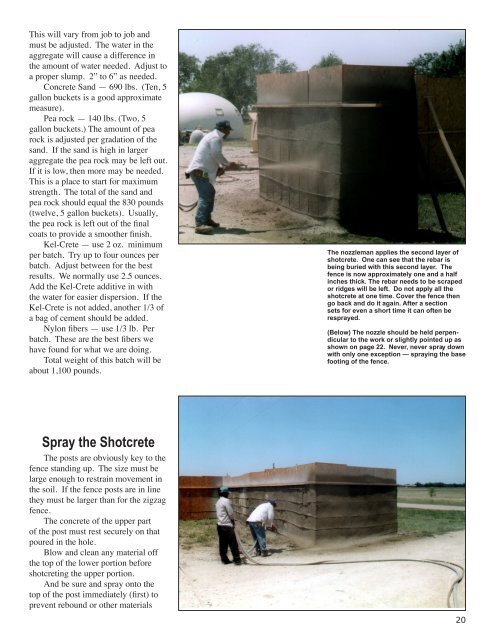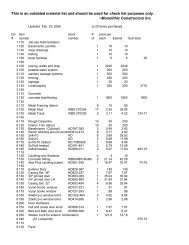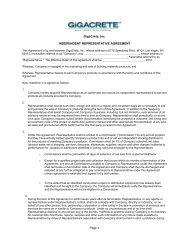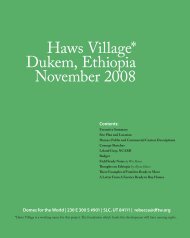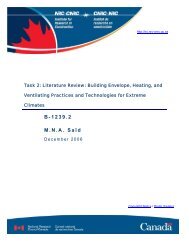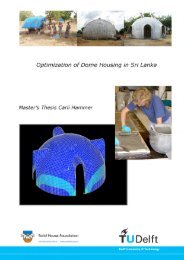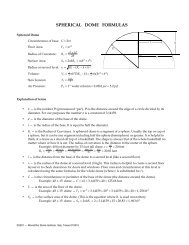How To Build A Spray-In-Place Concrete Fence - Monolithic
How To Build A Spray-In-Place Concrete Fence - Monolithic
How To Build A Spray-In-Place Concrete Fence - Monolithic
You also want an ePaper? Increase the reach of your titles
YUMPU automatically turns print PDFs into web optimized ePapers that Google loves.
This will vary from job to job and<br />
must be adjusted. The water in the<br />
aggregate will cause a difference in<br />
the amount of water needed. Adjust to<br />
a proper slump. 2” to 6” as needed.<br />
<strong>Concrete</strong> Sand — 690 lbs. (Ten, 5<br />
gallon buckets is a good approximate<br />
measure).<br />
Pea rock — 140 lbs. (Two, 5<br />
gallon buckets.) The amount of pea<br />
rock is adjusted per gradation of the<br />
sand. If the sand is high in larger<br />
aggregate the pea rock may be left out.<br />
If it is low, then more may be needed.<br />
This is a place to start for maximum<br />
strength. The total of the sand and<br />
pea rock should equal the 830 pounds<br />
(twelve, 5 gallon buckets). Usually,<br />
the pea rock is left out of the final<br />
coats to provide a smoother finish.<br />
Kel-Crete — use 2 oz. minimum<br />
per batch. Try up to four ounces per<br />
batch. Adjust between for the best<br />
results. We normally use 2.5 ounces.<br />
Add the Kel-Crete additive in with<br />
the water for easier dispersion. If the<br />
Kel-Crete is not added, another 1/3 of<br />
a bag of cement should be added.<br />
Nylon fibers — use 1/3 lb. Per<br />
batch. These are the best fibers we<br />
have found for what we are doing.<br />
<strong>To</strong>tal weight of this batch will be<br />
about 1,100 pounds.<br />
The nozzleman applies the second layer of<br />
shotcrete. One can see that the rebar is<br />
being buried with this second layer. The<br />
fence is now approximately one and a half<br />
inches thick. The rebar needs to be scraped<br />
or ridges will be left. Do not apply all the<br />
shotcrete at one time. Cover the fence then<br />
go back and do it again. After a section<br />
sets for even a short time it can often be<br />
resprayed.<br />
(Below) The nozzle should be held perpendicular<br />
to the work or slightly pointed up as<br />
shown on page 22. Never, never spray down<br />
with only one exception — spraying the base<br />
footing of the fence.<br />
<strong>Spray</strong> the Shotcrete<br />
The posts are obviously key to the<br />
fence standing up. The size must be<br />
large enough to restrain movement in<br />
the soil. If the fence posts are in line<br />
they must be larger than for the zigzag<br />
fence.<br />
The concrete of the upper part<br />
of the post must rest securely on that<br />
poured in the hole.<br />
Blow and clean any material off<br />
the top of the lower portion before<br />
shotcreting the upper portion.<br />
And be sure and spray onto the<br />
top of the post immediately (first) to<br />
prevent rebound or other materials<br />
20


